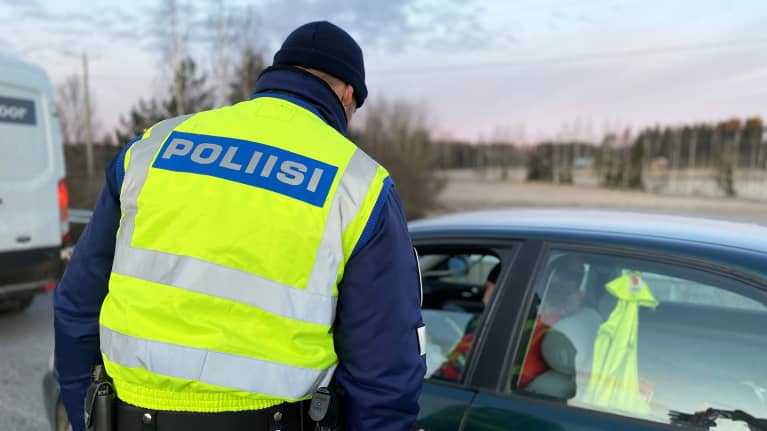Uusimaa, Finland's most densely populated region, went on lockdown until mid-April over the weekend with police monitoring traffic along the municipal border. Several newspapers featured live-streamed footage of the operation, which proceeded calmly on Monday morning.
Chief inspector Timo Leppälä told tabloid Ilta-Sanomat that around 7.30 am, the queue at the Orimattila ramp between Lahti and Helsinki was some six kilometres long, with a waiting time of about 25-30 minutes to clear inspection.
The IS stream showed police officers in green safety vests directing car after car to make a U-turn at the intersection on Lahdenväylä 76 km from Helsinki to find alternate routes on their journeys. However, no motorists had been ordered to turn back at time of writing, with travellers on necessary business allowed to enter Uusimaa from Päijät-Häme.
Non-essential traffic into Uusimaa had slowed down by 8 am on Monday. Drivers do not need to open their windows to present their documents, IS wrote. Police said they checked some 13,000 vehicles at the Uusimaa border on Sunday, with some 300 cars turned away.
Cities "nodes" for virus spread
Meanwhile Helsingin Sanomat takes a step back and looks at one of the macro-level phenomena affecting the rise and spread of infectious diseases, namely urbanisation.
Finland's population grew by more than 150,000 citizens in the decade between 2010 and 2019, mainly in cities. Over that period, population density rose by more than 50 people per square kilometre in only seven municipalities, while 228 less urban regions saw a fall in density.
Comparing sealing off Uusimaa with its high coronavirus infection rate to "cutting off a gangrenous limb", HS interviewed Helsinki University mathematician Elina Numminen. She said stemming traffic to and from the most densely-populated region in the country could stabilise what she called the contagion "web".
"If we didn't control the nodes in this web, people from Uusimaa could keep simply feeding the virus into the rest of Finland," said Numminen, who has studied the spread of epidemics.
The Finnish Institute for Health and Welfare (THL) said that by Sunday there were more than 1,200 coronavirus cases in the country. About 70 percent of them were found in Uusimaa.
Both Numminen and epidemiologist Pekka Nuorti from the University of Tampere told HS that close living alone is not the root cause of diseases spreading, but a contributing factor. Data on the spread of the virus is still incoming every day, both researchers said.
STUK: Further OL3 power plant delay possible
The Finnish Radiation and Nuclear Safety Authority (STUK) said on Monday that monitoring the country's existing nuclear plants will take precedence over the completion and commissioning of the long-overdue Olkiluoto 3 (OL3) nuclear power facility at Eurajoki in rural Satakunta.
There have not yet been sure signs of a further delay, but STUK said if COVID-19 incapacitates too many of employees it could affect the handling of license applications, according to Turun Sanomat.
"If we found ourselves in a situation where STUK didn't have enough resources for all operations or travelling to the Olkiluoto site became impossible, we would of course prioritise the smooth running of already-operational plants," said deputy chief Tapani Virolainen.
STUK said it has minimised personnel operations by having employees work from home and by cutting monitoring tasks down to the essentials, handled by personnel who do not need to travel.
